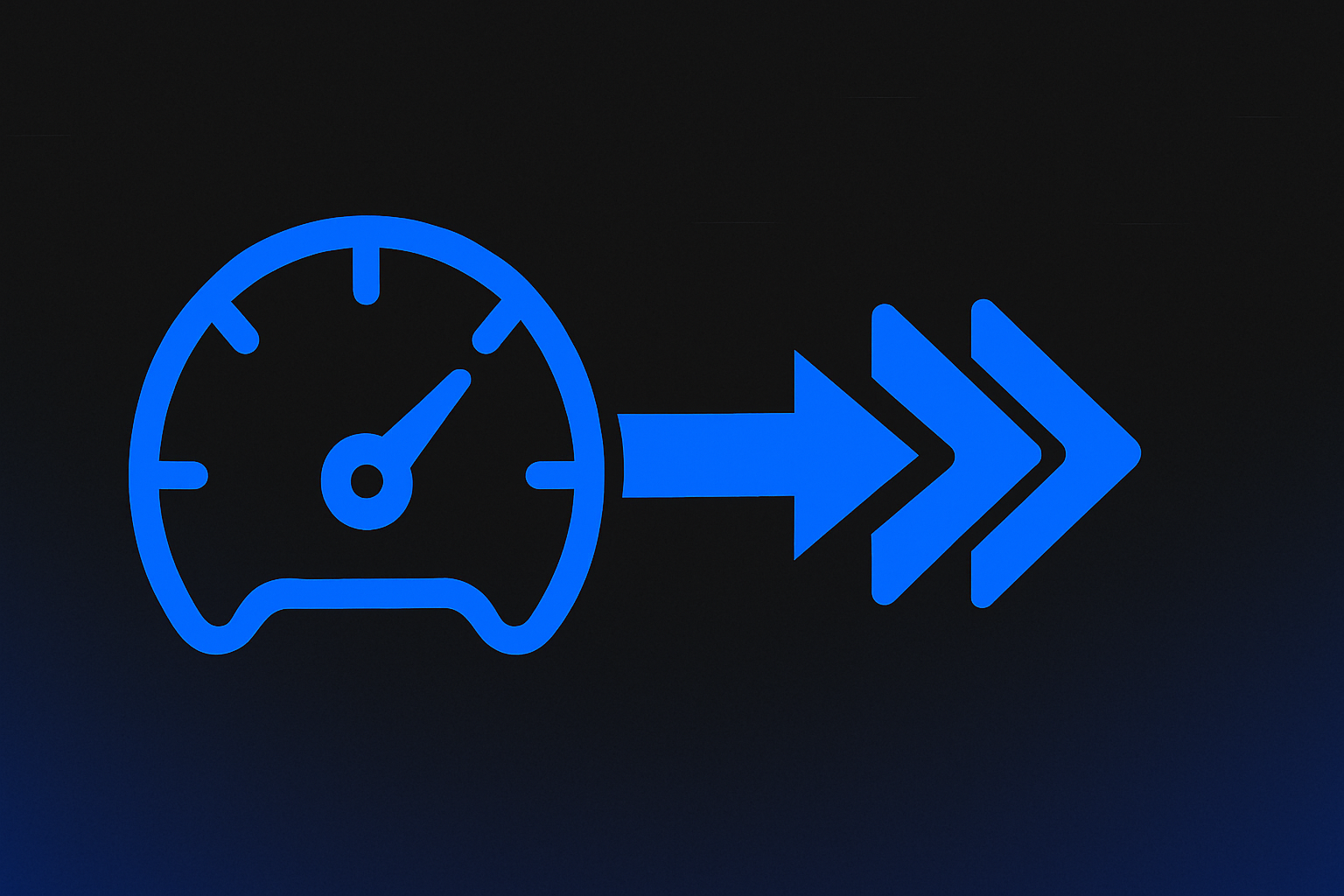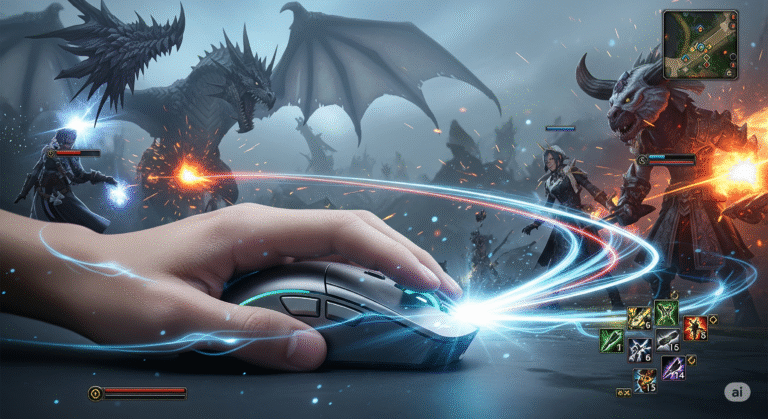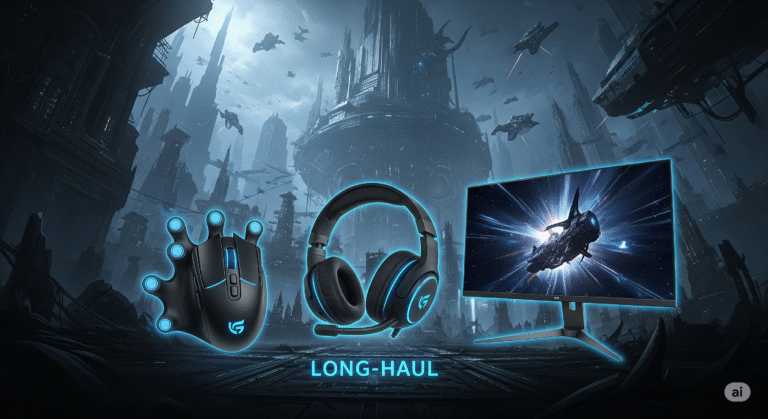What is ping?
To understand what makes your ping bad, we need to understand what “ping” actually is.
“Ping” is the response time between you and the server you’re connected to. Between you and that server there are several “nodes”. Your network will connect to these nodes and form a chain until it reaches the server.
There is nothing worse than having a ping spike, especially when you are in the middle of an intense trade.
I struggled for years with bad ping back at my mums house. The combination of a really bad PC and potato internet wasn’t very good, believe it or not.
To help you identify what your problem might be, i’ll list 5 things that may be putting a bottleneck on your ping.

1 - Your Internet
It will probably be no surprise to you that internet is, in fact, one of the main culprits for bad latency.
Most people assume it’s because you have a really slow download speed. This isn’t always the case. Ping isn’t measured by download speed, the difference in ping between 20Mbps and 500Mbs is negligible.
In most cases, 100mpbs is plenty. However, if you play games that often have large updates (I’m talking to you, WarZone!) or you are competing for bandwith with other people using the WiFi then you may need more.
What really matters is how fast your internet can send and recieve data. This will vary depending on what type of internet you have. It will vary depending on your ISP but as a rule of thumb, fiber optic is the best kind of internet for lowering your ping. If you’re look at changing your internet, do some research before hand.
Some examples of good WiFi providers are;
- Verizon Fios (USA)
- AT&T Fiber (USA)
- Virgin Media (UK)
- Zen Internet (UK)
- EE(UK)
- Superloop(AUS)
- Hyperfibre(NWZ)
One of the best things you can do is look online. WiFi quality can change depending on your location so, have a look and see what other people are saying is best around your location.
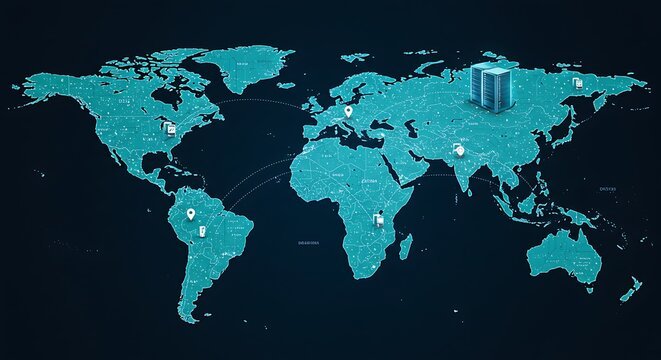
2 - Network Routing
We touched on this briefly at the start, network routes are very important when it comes to lowering your ping.
When you play any onling game, your pc has to connect to the games server. As you can imagine the further you are from that server, the worse your ping gets.
Between you and the game server there are nodes. These nodes act as little pit stops for your data. There can be any number of nodes between you and your desired server. However, some of these nodes can be congested and slow down your data from making it to the next node. Then your system will automatically choose what it thinks, is the best route.
More often than not, this automatic route will be hilariously inefficient, causing your data to take unnecessary detours to nodes that, in most cases, will slow down your packet from making it to the server.
How do I avoid this?
VPN’s – A VPN isn’t inherently designed to optimize your network. Having said that in some cases they can improve ping.
How? What a VPN does is it adds an extra node in your PC. This can cause your system to automatically re-route as you’ve broke one of the links in it’s automatic chain of nodes. for example;
Before VPN: PC –> NODE 1 –> NODE 2 –> NODE 3(Congested) –> NODE 4 –>NODE 5 –> Server.
So you can see in this link, Node 3 in the route is congested, slowing down your data.
After VPN: PC –> VPN –> NODE 1 –> NODE4 –> NODE 5 –> NODE 6 –> Server.
As you can see, after adding the VPN node, the path has changed. It has cut out node 2 and 3 (which was slowing you down) and added in a 6th node.
In this case it CAN speed up your network. If you have an older system and old WiFi, chances are the route is very inefficient. A VPN will most likely clean it up, but if you’re kit isnt that bad then it probably wont help your ping.
VPN’s do have many other good qualities though, it certainly doesn’t hurt to have one. I write about them here if you want to check it out.
There is a much better option that!
NOS – Network Optimization Service’s like – ExitLag – NoPing – GearUp Booster – are very good at what they do. They are purpose built to find the most optimal routes in your network, cutting out crappy nodes and shortening the total distance a data packet travels.
I have written an entire article on these products, and if you’re struggling with bad latency, packet loss or high ping then check it out here. Did I mention that they can also boost your FPS as well?
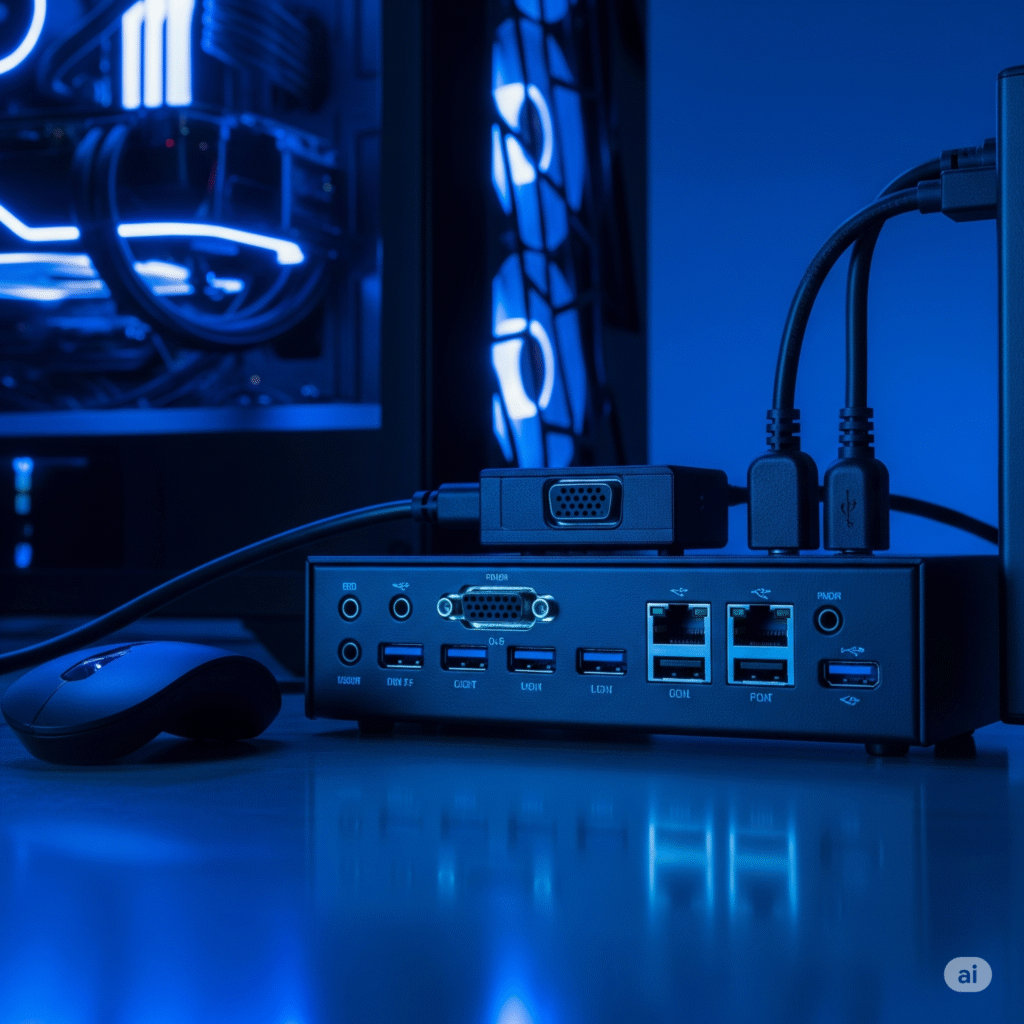
3 - Hardware
Arguably the most critical component to any epic rig is, well, the rig. But when I say hardware I don’t just mean whats inside your case (although that does matter) I also mean the hardware that controls your ping outside of the box.
Theres 4 main categories of hardware that can make a big difference in lowering latency, improving ping and reducing packet loss.
1 - Ethernet Cable
An Ethernet cable. This is the king of all hardware options, you are absolutely going to see huge drops in ping if you opt for a wired connection.
The main reason most people don’t have an Ethernet cable is because of where there router is located. In a lot of cases your gaming PC will be in a totally different room than your router.
This isn’t much of an issue if you’re happy having an Ethernet cable going across your house. The length of the cable CAN make a difference, but you won’t notice much of a difference unless the cables over 100m long, and if your house is that big, you can afford to get an extra router wired into your man-cave! But in any case, the shorter the better.
For optimal results you’ll want a cat 8 gaming Ethernet cable. Like this one.
2 - Gaming Routers
If an ethernet cable isn’t an option, Gaming routers are the easiest next step. Gaming routers prioritize gaming traffic, so if you’ve got kids that like to watch YouTube, your game will get bandwidth priority, reducing ping.
Gaming routers also tend to have more powerful processors and more bullet-proof WiFi capabilities.
However, if you have a house full of gamers, you still may be in a battle for bandwidth. Your overall data transfer speed will still likely increase, but having multiple games going at once might reduce the effects.
Gaming routers can get very pricy ($900+). There are more budget friendly ones that will definetely be an improvement over your current router. The ASUS RT-AX82U 5400 could be a good option for you without burning a hole in your pocket.
3 - Powerline Adapter
This one will be a bit trickier. It’s the only option that you cant just order on Amazon then plug and play the next day.
A powerline adapter uses the power lines in your house to transmit network signals. In essence you can hire a professional to make you an “Ethernet” socket next to your rig. This means you can plug an Ethernet cable from your pc to the wall, this then follows the power lines in your house all the way back to your router.
As you can imagine, this will be a fairly specialist job. On top of that, Powerline adapters aren’t compatiabel with each and every type of cable out there. They can also lose performance if they cant stick to the same circuit.
If you’re desperate for an ethernet connection but you’re router is on the other side of the house, this may be an option. I did some digging and found that basic kits can cost from $40 – $90 and more advanced kits are $150+ (this doesnt include the installation.)
4 - WiFi Adapter
A WiFi dongle is the adapter built into your PC. If this is old and outdated then upgrading this could work a treat.
If you have a fairly new PC with decent parts, this probably won’t be of much help. However if your system is over 5 years old it may be worth looking into getting a new dongle. Especially if you already have good ISP and router.
If you do already have a good ISP and gaming router but your still suffering with ping issues, and you can’t go hardwired, then it’s time to upgrade your dongle.
There are 3 types of WiFi adapter. I’ll List them in order starting from the best.
- 1 - Onboard WiFi. This is WiFi that is built in to the motherboard of your pc via a chip or a module. These are your best option however, it would require you completely rebuild your PC in order for you to upgrade your motherboard. Also take not that youd need to find the appropriate motherboard for the rest of your PC parts, not all brand are compatible with each other.
- 2 - PCIE WiFi Adapter. These types of adapters get built into your existing rig. Typically if you pull of the back of your computer there will be a slot that you can plug them into (check you have the available connections for the adapter to fit). These offer superior speeds and longevity over the third option.
- 3 - USB WiFi Adapter. Unlike the other two options, these are plug and play. Very quick and easy to set up and in most cases it will be all you need. Avoid low quality adapters as they are prone to breaking. I would recommend using a high quality dongle by a recognised brand. I reccomend this adapter here.

4 - Battle For Bandwidth
Having multiple people in the house all trying to use the internet at once will affect your ping. Theres only so much room on the bandwidth and if you have other devices that are all trying to acces the internet simultaneously then you will all suffer.
This doesn’t just apply to other internet users either, it counts towards anything that is connected to the WiFi. We’re living in 2025 now, our TV’s, phones, PC’s, fridges, toasters, toothbrushes and pets are connected to the WiFi. If you have others living with you like kids, friends, partners, then upgrading your WiFi and getting some extra Mgps will be very beneficial.
If you live alone, it’s worth turning off all your other devices that are connected to the WiFi (Phone, TV, smart watch etc). You might just find that this gives you a little bit more of a competetive edge when it counts.
Another option we have already gone over is a gaming router. If you’re the only gamer in the house then this would be ideal as it puts gaming data packets to the top of the list. Then you have the Ethernet cable option which would be the best as you get direct priority over wireless connections

5 - Background Apps
A common thing people overlook is what’s happening in the background. If you have lots of apps and services running in the background it can be taking away precious resources.
For example if you are trying to play Valorant and you have YouTube, Steam, Discord etc open in the background, they could stop you from getting that epic clutch to win the match.
For starters you can close all tabs, Close any open apps like Google, Steam etc. However, a lot of apps stay open in the background. We can check this by using task manager.
To open task manager press: CTRL-SHIFT-ESC at the same time.
Now you’ve opened task manager you’ll see 4 columns called CPU, Memory, Disk, Network.
In this case, network is the most important, but it doesn’t hurt to take note of what other categories are working harder than they need to. So remember earlier when i said to close apps like Steam? You’ll see if you scroll down, Steam is infact still running as a background process.
If you right click – end task, this will shut down the process entirely. I’t won’t harm anything, it just stops it from eating data in the background.
There are products and services that do all of this for you, keeping your background apps to a minimum and aiding performance. We have already briefly spoke about them, They are network optimization services and they are the very best at what they do. Not only do they route your network very efficiently but they keep working behind the scenes to stop background apps from bottlenecking your network.
I’ve wrote an article on the best NOS’s here, I highly recommend that you check it out!
Summary
In short we have identified that having fiber optic internet, good network routing, high quality hardware and killing background noise is what will give you the best possible ping in game.
Now that you have all the information you need to decide what would improve your latency, it is time for you to take action!

